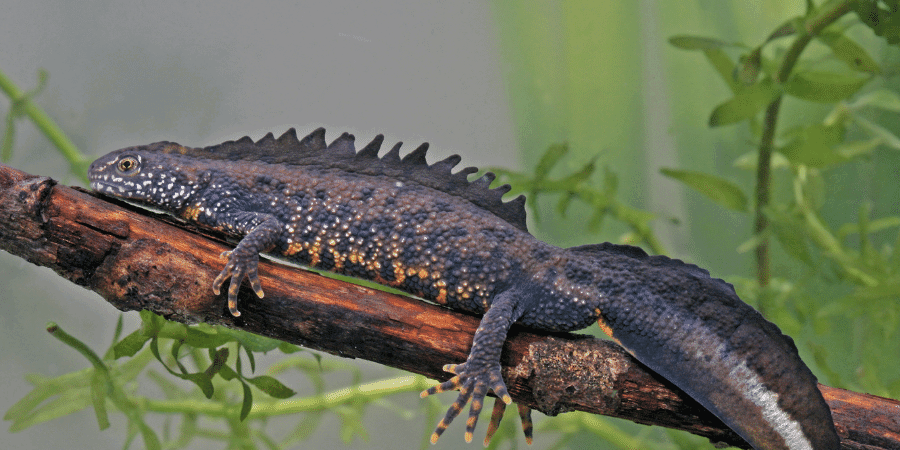Ten facts about the Great Crested Newt (GCN; Triturus cristatus)
- Individual Great Crested Newts can be identified by looking at their bellies, as the pattern of black spots they each sport is as individual as a fingerprint.
- Though it is called the great crested newt, only the males actually have crests. The crests are most prominent during the mating season.
- Great Crested Newts can reach up to 17cm and are the largest and least common newt species in the UK.
- Great Crested Newts is one of four amphibians protected by the UK biodiversity action plan. The other three are the Common Toad, the Natterjack Toad and the Pool Frog.
- After mating each female lays around 200 - 300 eggs, and wraps them inside the leaves of pond plants.
- The skin of a great crested newt contains glands that secrete a poisonous substance to deter predators.
- The Great Crested Newt is also known as the Northern Crested Newt and the Warty Newt.
- Juvenile Great Crested Newts are called ‘Efts’
- Great crested newts have been around for approximately 40 million years
- The Froglife website has a great guide showing how to identify great crested newts and has ‘The Great Crested Newt Conservation Handbook’ a comprehensive guide to habitat management, pond creation and restoration.

